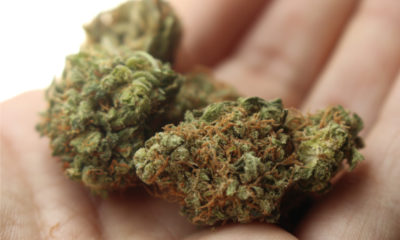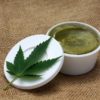
Medical
Understanding Terpenes: Linalool
A deeper look into the fragrant oils and powerful compounds that boost the healing potential of cannabis.
In the vast world of aromatherapy, it’s not uncommon for products that increase relaxation and reduce stress from bath products to potpourri to include the fragrant smell of lavender or jasmine. People who burn candles and incense or use essential oils to boost their psychological or physical well-being will swear by the smell for its ability to take the edge off of an overwhelming day or help them finally get a good night’s rest. The terpene in these aromatic plants that’s responsible for helping to calm the nerves and ease the mind is called linalool and it’s also found in a number of other plants and herbs like cannabis, coriander, birch and rosewood as well as a variety of mint and laurel plants.
Though linalool isn’t typically found in as high of an abundance as other common terpenes like limonene or myrcene in cannabis, it’s still been shown to have a host of healing properties. Linalool is so powerful that just smelling its mostly floral fragrance with some hints of spice can help reduce anxiety, stress and even some symptoms associated with depression. There’s a study that showed that when rats inhaled linalool while under duress, their stress levels were able to return to normal afterwards. The same sedative properties present in linalool that help people keep their cool can also help with sleeping issues like insomnia.
Linalool also acts an effective anti-inflammatory which helps with the underlying causes of many chronic pain conditions including arthritis and fibromyalgia and has antiepileptic properties that can help with seizures and convulsions. A study published in the Journal of Phytomedicine also showed that linalool acts as an analgesic that can aids in pain management, which could help patients reduce or eliminate their reliance on opiods for pain relief. Additional studies have shown that cannabis could ease the symptoms of opioid addiction and make recovery easier and can be effective in reducing deaths associated with opioid overdose, if more people had access to dispensaries.
According to Steep Hill Labs, Linalool is also a “critical precursor to vitamin E” which might explain why it can be a powerful topical skin treatment. Though there are precautions against synthetic linalool and linalool that has been oxidized, when it is naturally-occurring, linalool can have a number of benefits from soothing irritated skin to calming down a rash. For people who have issues with their skin, finding or making a topical treatment out of a strain that has a high linalool content could be the answer they need for relieving pain and dealing with skin issues. One thing to take into consideration is if you have sensitive skin or can’t verify that the linalool you’re using is natural, it could actually cause irritation, so it’s important to be diligent about checking sources and buying organic products before applying it on your body.
Some common strains that have a linalool in their terpene profiles include Purple Urkle (a grapey indica that burns through stress and depression), Lavender (a flowery indica that’s a good for chronic pain), LA Confidential (a soothing indica that can help with issues getting to sleep), Granddaddy Purple (a stoney indica that’s relaxing and euphoric) and Grape Ape (a dense, fruity indica that keeps anxiety at bay).
Another useful but totally random fact about linalool is that the vapors have been shown to be a powerful insecticide against pests like fruit flies and fleas, so pulling out some Lavender or GDP if you find yourself dealing with annoying insects could be helpful in getting them to leave the space.
TELL US, have you tried any of the strains that contain linalool? Which is your favorite?
























